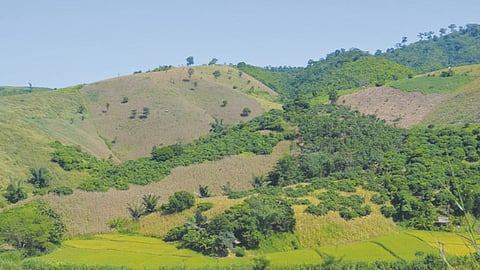

New Delhi | Scientists have found out that the annual rate of loss of mountain forests has increased by 50 per cent from 2001-2009 to 2010-2018, when the planet lost approximately 5.2 million hectares of mountain forests per year.
The international team of scientists, led by Leeds University, UK, have expressed concern over the accelerating rate of loss of mountain forests, as more than 85 per cent of the world's bird, mammal, and amphibian species live in mountains, particularly in forest habitats.
The authors, who wanted to investigate the extent and global distribution of mountain forest loss, reported their findings in the journal One Earth.
They wrote that this acceleration is probably largely due to rapid agricultural expansion into highland areas in mainland Southeast Asia, as well as increased logging of mountain forests due to either depletion of lowland forests or because these lowland forests became protected.
Globally, they said, that the Earth has lost 78.1 million hectares, or 7.1 per cent, of mountain forest since 2000 - an area larger than the size of Texas, a state in the US.
Much of the loss occurred in tropical biodiversity hotspots, putting increasing pressure on threatened species, they said in their study.
Tropical mountain forests experienced the most loss - 42 per cent of the global total - and the fastest acceleration rate, but also had a faster rate of regrowth compared to mountain forests in temperate and boreal regions, the researchers said.
Overall, in these forests, they said that they observed some signs of tree cover regrowth in 23 per cent of the areas that lost forest.
Once protected from deforestation by their rugged location, they have been increasingly exploited since the turn of the 21st century as lowland areas become depleted or subject to protection.
Logging was the biggest driver of mountain forest loss overall (42 per cent), followed by wildfires (29 per cent), shifting or "slash-and-burn" cultivation (15 per cent), and permanent or semi-permanent agriculture (10 per cent), though the importance of these different factors varied from region to region, the authors said.
Significant loss occurred in Asia, South America, Africa, Europe, and Australia, but not in North America and Oceania, they said.
To achieve their objectives, the team tracked changes in mountain forests on a yearly basis from 2001 to 2018.
They quantified both losses and gains in tree cover, estimated the rate at which change is occurring, compared different elevations and types of mountain forests - boreal, temperate, tropical - and explored the impacts of this forest loss on biodiversity, they said in the study.
"Knowledge of the dynamics of forest loss along elevation gradients worldwide is crucial for understanding how and where the amount of forested area available for forest species will change as they shift in response to warming," the authors wrote.
Protected areas experienced less forest loss than unprotected areas, but the researchers cautioned that this might not be enough to preserve threatened species.
The authors also emphasize the importance of considering human livelihoods and wellbeing when developing forest protection strategies and interventions.
"Any new measures to protect mountain forests should be adapted to local conditions and contexts and need to reconcile the need for enhanced forest protection with ensuring food production and human wellbeing," they said. PTI
